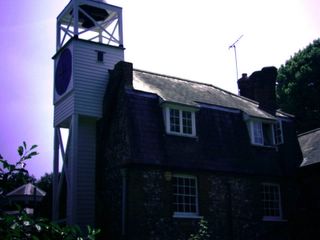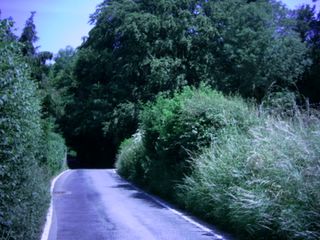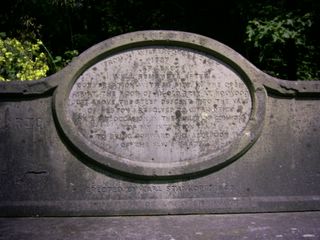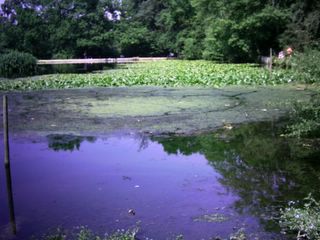
Ancient monolith

I then went down a long suburban street with some dignified council houses and some less dignified council tenants who stared and entered Crofton Woods. Crofton Woods are ancient woodland, and, unlike the walk by the Thames contained teasels although they were not mature. Arthur Mee does not mention Crofton Wood, so I can’t give you much background but they were very pleasant with very few people around. Crofton Village was supposed to have a sign but I must have missed it as I missed the church. Crofton seems to be omitted from Arthur Mee’s Kent guide so no background here either, but the path continued through Darrick Wood via a playing field and a meadow with a good view of the North Downs.
Crossing Farnborough Way I came to the village of Farnborough (Kent not Surrey). Farnborough has some lovely old buildings including its 17th century church (locked as usual) and a peace memorial in stone. Lord Avebury, who gave the people bank holidays as well as protection of open spaces and birds so we can enjoy them better, is buried in the churchyard although his tomb had to be removed after abuse by bank holiday picnickers.
Leaving the churchyard one enters open countryside and woods then I entered High Elms Country Park. This is where Lord Avebury lived. Although the house burnt down in the year I was born, the formal and informal gardens are now a country park for Bromley Council. I speculated on whether I should like to live in Bromley or not (but not if I could afford it) and it would be nice… I was soon away from the park and the golf course and walking through what claimed to be a restored orchard. I wasn’t aware of any fruit trees but it looked as though it had decayed again and needed another restoration. I passed this curious house with a clock on it.

The clock building

This is not mentioned in any of the guide books so I am at a loss as to its function. The next point of interest was Bogey Lane, a charming green lane between two fields. I felt quite like an ancient Briton and had to stop myself throwing off my clothes and painting myself with woad! The loop for some reason went into a wheat field so I faithfully followed it to the letter and photographed a field of poppies in the distance (if this comes out I’ll post it). Bogey Lane came out onto a charming country road called Farthing Lane.

Farthing Lane Bromley - The London Borough

No one would expect a road like this to be in a London borough, so take my word for it that it is and how truly rural London can be. I passed by Holwood House at Keston, taking a picture. Arthur Mee states that one can wander through the grounds at will but the property owner appears to have changed this policy. In fact, the commemorative stone seat where Wilberforce debated abolition of slavery with Pitt has been locked and barred. Here is the seat's inscription.

Stone anti slavery seat

I saw a goldfinch in the grounds. Passing through Keston Common I saw Caesar’s well where Caesar's men had taken refreshment at a little spring.

Ceasar's Well Keston Common

As a raven guided them to it, the river for which it is the source is called the Ravensbourne. There are three ponds on Keston Common, which was busy with fishers and people enjoying the sun.

Source of the Ravensbourne, Keston Common

Keston village had a village store (thriving – while I was there one man bought £20 worth) and a pub called the Fox where I had a ginger ale shandy. I do not think the young barman had heard of shandy as he added ginger ale to a glass and topped it up with lemonade. I asked him if there was to be beer in it when he got the idea and made a proper one. Keston also has a drinking fountain (dry) on the common but I resumed my walk on the path to West Wickham Common and the end of this stage. The Corporation of London saved the common from development in 1892 but has some very odd byelaws. For example in order to take amateur photography I must have a licence from the Corporation. Not having such a licence I did not take any but I must remember to get one. The path led by an alleged Elizabethan (I not II) earthwork and some pollarded oak trees both alive and dead. This stage ended at the end of the common so I went home via Hayes.


1 comment:
Hi, I enjoyed reading about your walking tour of West Wickham & Keston, as I was brought up in Keston, and lived near to the Parish Church. I remember High Elms being burnt to the ground and as far as I know, the reason for the fire was never established. I hope you don't mind me saying the the road you mention as Farthing Lane is known as Farthing Street. Also, the house, which was the home of William Pitt is known as Holwood House.
Regards,
Douglas Neve
Post a Comment